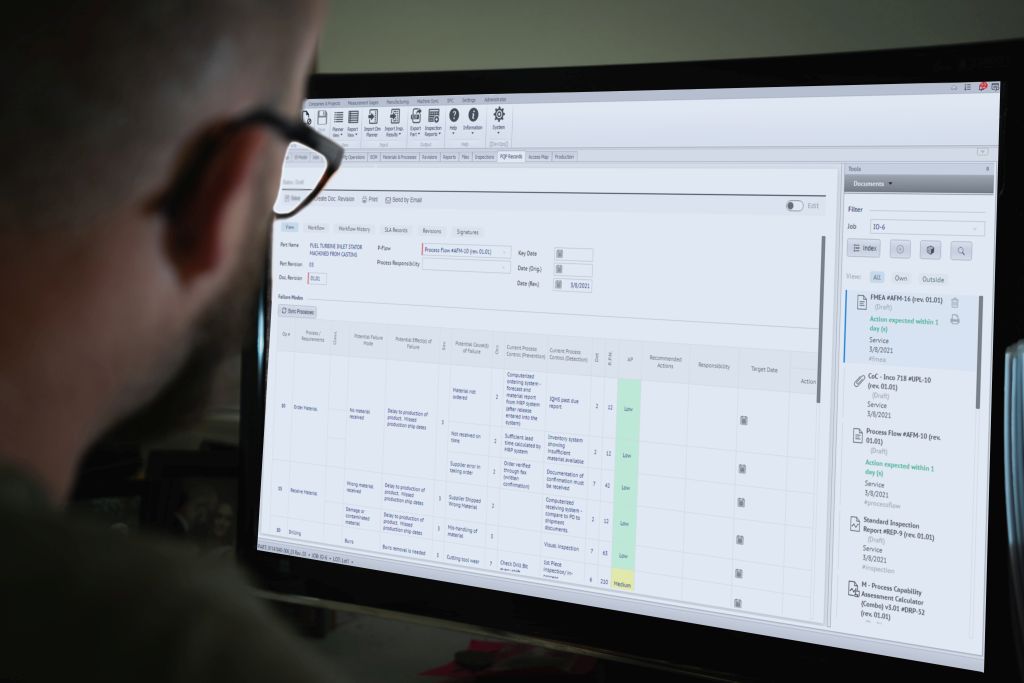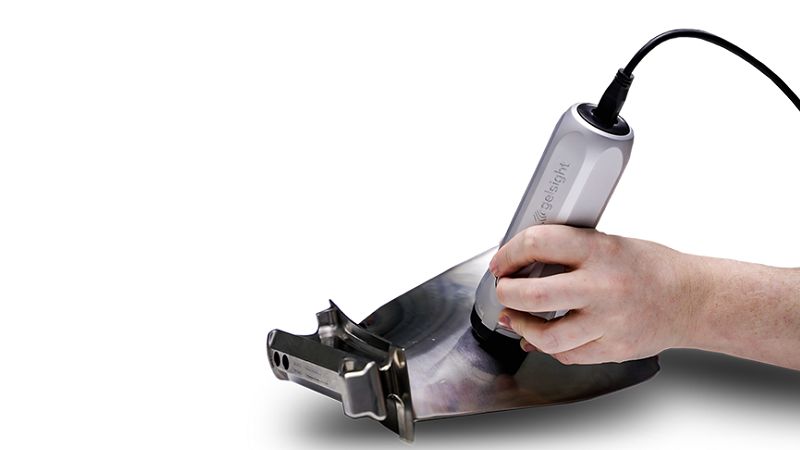Future models of metrology

The Sempre Group’s applications engineer, Peter Jones explains the key measurement and quality trends in aerospace manufacturing.
Any space travel aficionado will know how a measurement error resulted in NASA losing its Mars Climate Orbiter in 1999. While a navigation team at the Jet Propulsion Laboratory (JLP) was using the metric system of millimetres and metres, the orbiter’s manufacturer provided acceleration data in inches, feet and pounds.
Lost in translation, the probe vanished into orbital insertion. While lessons were learnt from this incident, metrology is a fast-moving field that aerospace manufacturers must remain up to date with.

In the world of aerospace compliance, an increasingly stringent set of regulations is essential. For example, every manufacturing facility works towards AS 9100 certification which means demonstrating and communicating safety and reliability across the supply chain. With regulatory compliance as the goal, measurement and quality management is almost certainly the means. What better way of checking that critical components like engine fan blades and wing spars meet industry standards than with connected metrology?
Even in a market as tightly regulated as aerospace, measurement and quality data is sometimes an afterthought – often destined for a stacked filing cabinet or a cluttered spreadsheet on the manufacturer’s hard drive. Thanks to automation, it’s never been easier for manufacturers and engineers to collect and store data about specific parts in a centralised system.
The value of data
Over the last few years, the emphasis on data collection has grown immensely. As well as compiling measurements for each part in first article inspection (FAI) reports to demonstrate compliance, aerospace companies must be ready to provide customers with similar data. For Tier 1 and 2 aerospace firms, providing information on part geometries, tolerances and other characteristics can be the difference between winning a contract or losing it to a competitor.

Relying on outdated manual storage makes it challenging to retrieve individual files or measurement and statistical process control (SPC) data that customers request. There are now a wide range of software solutions that can help manufacturers manage this data more effectively. For example, the Prolink SPC Data Collection Software allows users to automatically collect data from any metrology or manufacturing system, giving them full visibility of all components and their characteristics.
Model-based definition
Like most industries, aerospace has traditionally relied on 2D engineering drawings to convey information about a part’s geometry. It’s also a very culture-driven market: when developing an aircraft, it’s become second nature to just save over the old drawing and release the amendments, rather than create a new one. However, relying on 2D drawings is problematic because even the most detailed blueprints can be misinterpreted, leading to accuracy errors that risk reputational damage.
Although conventional 2D drawings are a pastime for many aerospace manufacturers, we are now seeing a shift away from them. Newer aircraft, such as the Airbus A350, are often CAD-based and designed as new models from scratch. Likewise, manufacturers are increasingly using 3D models, such as solid models, within CAD software to provide specifications of different components. A wealth of information is now at their fingertips, with everything from geometric dimension and tolerancing (GD&T) data to details on engineering configurations and design intent.
Replacing 2D drawings with model-based definition means less data is involved and less ambiguity because all the information is contained in one model. The possibilities are endless. Soon manufacturers could have an all-in-one software that tells them how to make a model, produce the part for them, write the measurement routines and deliver a finished product.
Some manufacturers may not currently be looking at model-based definition (MBD) but sooner or later, it will become ubiquitous. More and more data collection software is already coming with in-built MBD capability. For example, High QA Inspection Manager enables manufacturers and engineers to incorporate 3D models into their quality process. With one click, they can scan entire drawings, models, a combination of both, and multiple pages. From this, they can extract, modify and manage GD&T data, product managing information (PMI) and critical dimensions.
Outdated advanced product quality planning (APQP) processes were completed manually and typically relied on Excel-based software. This increased complexity and the possibility for error when managing the internal manufacturing quality processes that are crucial for AS9145 compliance. Meanwhile, preparing production part approval processes (PPAP) document submission was also cumbersome. However, software like High QA can help create and monitor APQP and PPAP requirements by improving traceability and accountability throughout the quality process, offering a database-driven solution that doesn’t rely on spreadsheets.
Smart solutions
Accuracy and precision are key in the maintenance, repair and operations (MRO) market. For instance, when an aircraft comes in for an annual inspection, its wing and centre assembly, propellor and many other mechanical components will be assessed on whether they meet safety standards. Augmented reality (AR) and virtual reality (VR) are becoming more common across the aerospace industry, whether it’s for manufacturing commercial planes or aircraft for NASA and the Air Force. This technology is rapidly being deployed for training, maintenance, design and manufacturing purposes.
It's no secret that manual training and assembly is time-consuming, which can reduce the productivity of aerospace manufacturing facilities still playing catch-up after the pandemic. Meanwhile, when using AR, manufacturers and engineers can project a visual image on a screen of the work that must be completed. Smart technology can also improve training by building muscle memory in less experienced staff to help them become familiar with the various assembly stages. These simulators can also be deployed remotely, so long as the engineer has the display.
If there was ever a time to invest in systems that support aerospace assembly line staff, it’s now. For example, the Arkite Human Interface Mate (HIM) can guide workers using visual cues by projecting step-by-step instructions onto the workstation for them to follow. The system can also present instructions in multiple languages, overcoming any linguistic barriers that would prevent workers understanding the directions. Visual projections can improve accuracy by notifying the operator when a step is incomplete or has been performed incorrectly, ensuring that all parts meet quality standards.
After assembly, manufacturers can use the GelSight Mobile handheld 3D topography system to visualise and measure the surfaces of windshields, engine fan blades and other components to check for defects like scratches.
While not every aircraft risks being lost in the depths of space, failing to prioritise measurement and quality inspection can result in parts losing accreditation and, eventually, breaking down. MBD and smart technologies like VR are just a couple of examples of how the industry is changing, and how connected metrology can guide manufacturers both physically and metaphorically.













